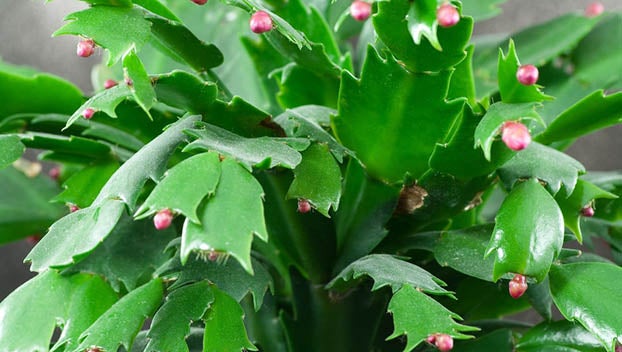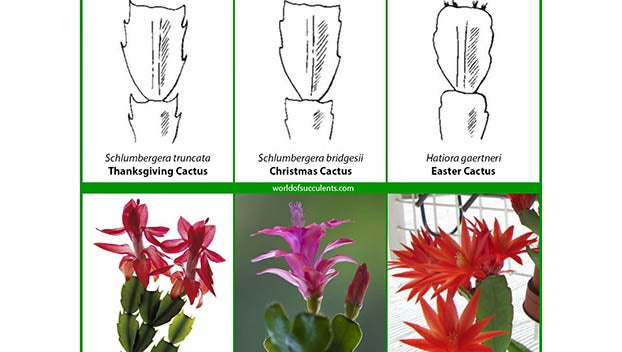MASTER GARDENER — Holiday Cacti include Thanksgiving, Christmas & Easter (Part 1 of 3)
Published 12:12 am Friday, November 18, 2022

- Schlumbergera truncata, better known as Thanksgiving Cactus, are available in numerous colors.(Image courtesy Farmersalamanac.com).
|
Getting your Trinity Audio player ready...
|
Gardeners, we are once again experiencing brisk weather, though it’s cold to me and looks as though it’ll be “hanging around” for more than a week.
In preparation of rainy, colder temperatures, my first step sent me scrambling into the vegetable garden, harvesting vegetables and herbs, a few which don’t enjoy cold weather, such as English cucumbers and basil.
After harvesting more than a bushel of cucumbers, I phoned friends and neighbors who would be interested in a share of the bounty.
Next step, shopping for a few grocery items at a local Bridge city store as I tend to stay indoors once cold weather arrives. While picking up “groceries,” I noticed a multi-tiered nursery rack loaded with an abundance of blooming Thanksgiving cacti in numerous colors.
Always on the lookout to add new plants to my collection, each plant on the rack was thoroughly scrutinized. Several were noted to have one paramount characteristic: bloom buds well developed yet remain unopened. What a great find and at a very reasonable price!
I conveniently failed to mentioned-replacement Thanksgiving cacti. I wanted to purchase new plants since last year’s purchases didn’t survive this Master gardener’s heavy-handed watering technique! So, let’s dig into this week’s topic, Holiday cacti.
Holiday cacti are not like the instruments of torture or spiny plants growing in our succulent gardens. These cactus plants are epiphytes, originating from the tropical treetops of the rainforests and the natural forests of Brazil.
These cacti produce beautiful blooms that vary in color from bright orange, red and purple to subtle pink and white variations. There are three varieties that are considered holiday cacti: Thanksgiving (Schlumbergera truncata), Christmas (Schlumbergera bridgesii) and Easter (Rhipsalidopsis gaetneri).
These three plants look remarkably alike and require similar care, but as we closely inspect them there are differences to be noted.

The images (illustrations) highlight differences between the three types of holiday cacti. (Image courtesy of world of succlents.com)
Thanksgiving Cactus (schlumbergera truncata)
The leaves of Thanksgiving cactus plants are flat and wide, with small, serrated edges. These plants often bloom in shades of pink, yellow, white or red, which is notably a bright contrast to traditional fall décor.
The blooms may last from two to four months, but for them to flower again the following year, the plant requires a dormant stage by providing it with less light and cooler temperatures.
The most important aspect to consider while caring for a Thanksgiving cactus is watering. Carefully provide the amount of water necessary to keep the soil moist. The soil needs to remain moist, but it will not tolerate being overly saturated or having “wet feet.”
These plants grow naturally in the tops of the trees, where there is less moisture and more sun. Further, these plants enjoy the sun, but direct sunlight is not required. High humidity encourages this plant to thrive, which is the way these plants are found in nature.
Prune the plants during the summer months to prepare them for their Thanksgiving blooming period beginning in September. During this time, the plant requires 12 hours of darkness a day.
Propagation of the plants is easy and begins with a stem having a few leaves attached. It is imperative to allow the stem to callus for a few days (1 to 3 days) before planting the cutting into moistened soil.
Place a clear plastic tent over the cutting to increase the humidity level around the plant cutting and secure to the pot with a rubber band. Remove the plastic tent every couple of days to allow the cutting to have fresh air for an hour or so, and in three weeks the cutting will take root.
Normally, it will take 2 or 3 years for cuttings to bloom.
Next week, part 2 in this series, we will continue the discussion of holiday cacti: Christmas cactus. So long for now fellow gardeners.
John Green is a Certified Texas Master Gardener. If you have gardening questions or need more information, contact the Orange County Master Gardeners Helpline at 409-882-7010 or visit txmg.org/orange, Orange County Texas Master Gardeners Association on Facebook or email extension@co.orange.tx.us.





